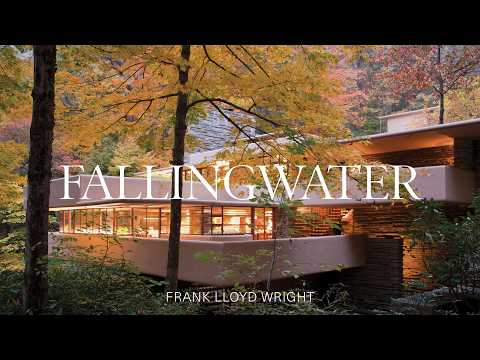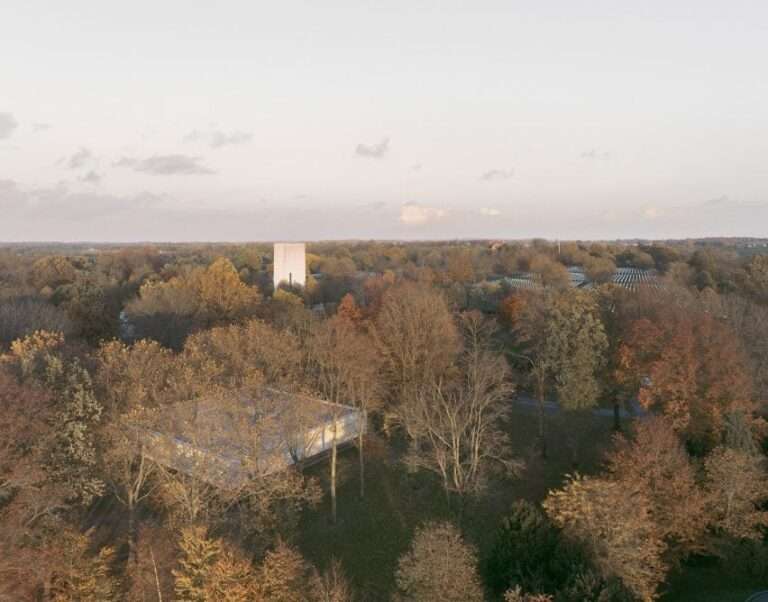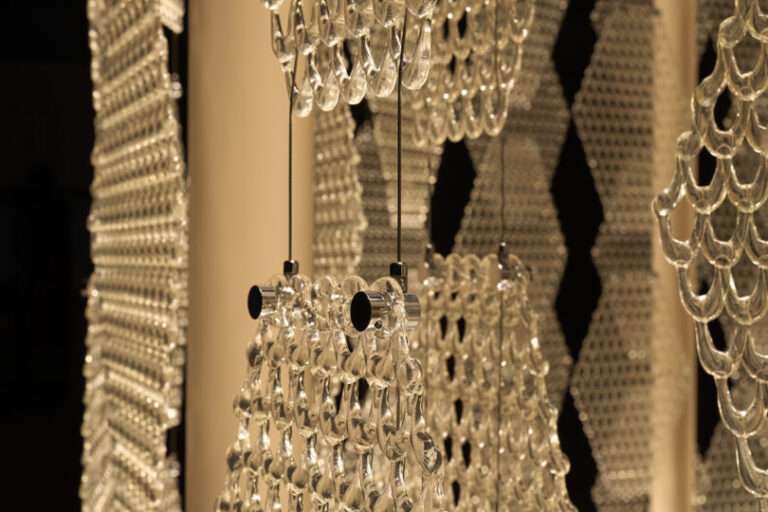A Star Wars-like cemetery extension and a cheese-shaped temple feature in this roundup, where photographers Roberto Conte and Stefano Perego spotlight the best brutalist buildings from their book Brutalist Italy.
The two photographers, who previously worked together on the book Soviet Asia, wanted to focus on how reinforced concrete architecture has developed in Italy after documenting brutalist structures outside of the country.
Buildings in book are “visually impressive”
“We are attracted by modern architecture and in particular how it developed in that specific period of the 20th century when brutalism flourished,” Conte told Dezeen.
“From one point of view, those architectures are surely impressive, visually striking and sometimes surprising,” he continued. “Even if they have 50 or 60 years most of them are not very well known, so they allow a photographer to research something not much seen before.”
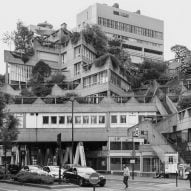
 Seven Parisian brutalist buildings that illustrate the movement’s “level of experimentation”
Seven Parisian brutalist buildings that illustrate the movement’s “level of experimentation”
The duo also believes that less ornamental buildings lend themselves especially well to photography.
“We realised that in buildings without much decoration, the role of the photographer is somehow enhanced in order to highlight the specific features of the structure,” Conte said.
“Strong and significative growth of interest” in brutalism
Some of the buildings featured in Brutalist Italy have been abandoned or are in need of maintenance, while others remain in good condition. While the architectural style continues to be divisive, the photographers believe there is a growing interest in it.
“Taken as a whole, brutalism still encounters almost automatic resistance from a good portion of the population, while there is a strong and significative growth of the interest in this kind of architecture, as it also happening in rest of the world,” Perego said.
“We definitely belong to the second category!”
Read on for Conte and Stefano’s 10 picks of buildings from Brutalist Italy:

Jesus the Redeemer Church, Turin, by Nicola Mosso, Leonardo Mosso and Livio Norzi (1957)
A concrete ceiling composed of interconnected triangular skylights adds a decorative touch to this mid-century brick church.
Perego described it as “one of the most surprising ceilings among all Italian churches, created by a remarkable composition of concrete elements and elegant openings that let light filter in dynamically”.
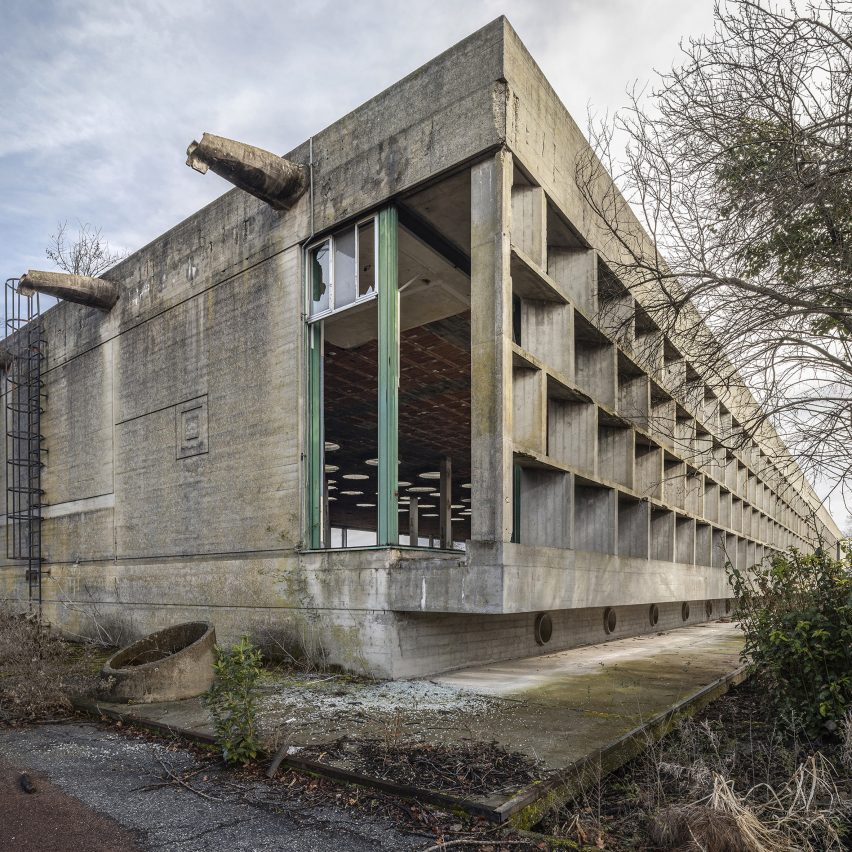
Marxer Laboratories, Loranzè, by Alberto Galardi (1964)
The abandoned Marxer Laboratories building in northern Italy has an imposing design, with a facade made from exposed concrete and rows of symmetrical windows.
“This building is located on the outskirts of what was once the Italian town most devoted to innovation, Ivrea,” Conte said.
“Although in an advanced state of neglect, the clarity of the design, the attention to the management of natural light and the quality of the reinforced concrete are still clearly visible.”
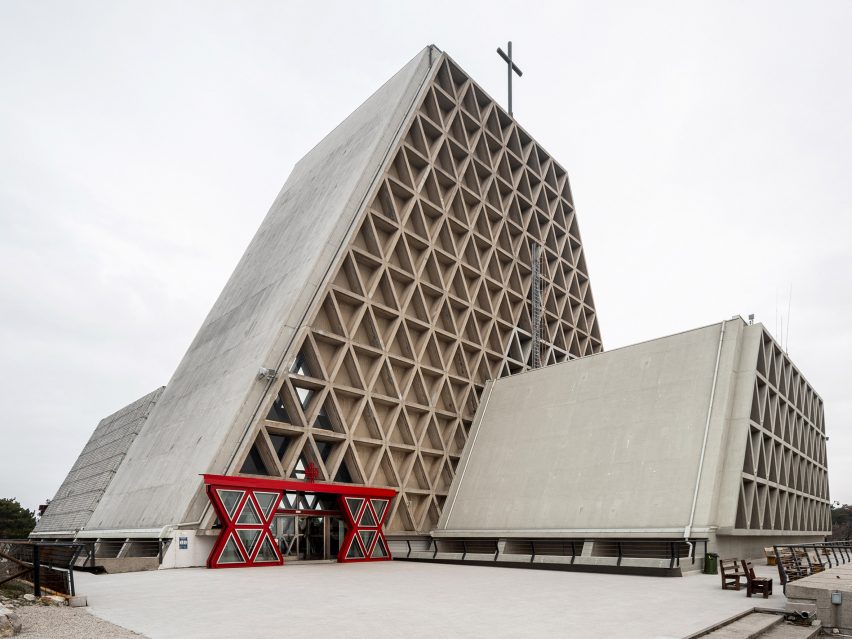
National Temple to Mary, Mother and Queen, Trieste, by Antonio Guacci and Sergio Musmeci (1965)
This Roman-Catholic church, dedicated to Mother Mary, has a monolithic modernist design that makes it stand out from traditional places of worship.
“Nicknamed ‘the little cheese’ by the people of Trieste due to its particular shape, it stands out on the top of a relief that offers a magnificent panorama of Trieste and the sea, in which the internal and external space is formed by a multitude of triangles, which symbolically represent the M, first letter from Mary,” Conte said.
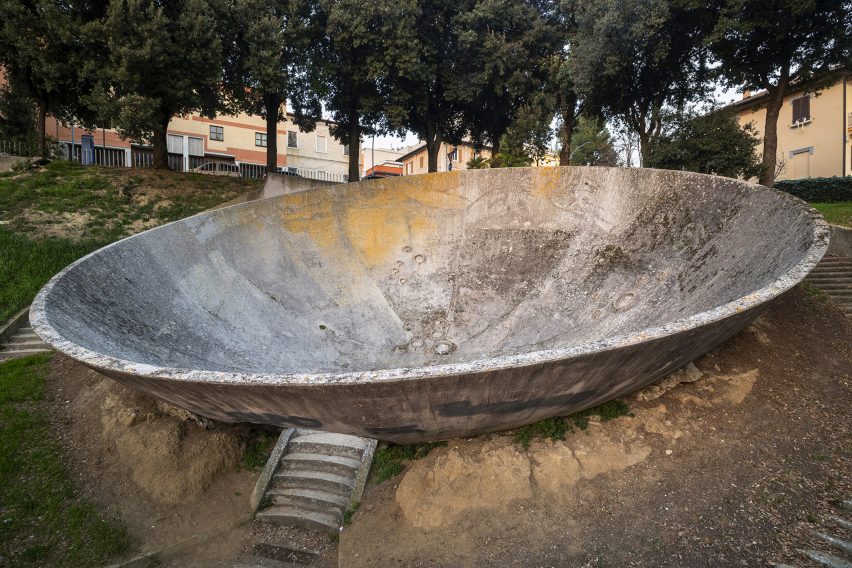
Monument to the Resistance, Macerata, by Gruppo Marche: Paolo Castelli, Luigi Cristini and Romano Pellei (1969)
Located in central Italy, this 1960s monument commemorates the local resistance movement that fought against Nazism and Fascism during world war two.
“Built in the same year of the Apollo 11 mission on the Moon, this monument somehow ideally connects the craters of the war fields of the past with the lunar crater of the future, through a hemispherical lunar structure from which one can enter a space separated from the rest of the city,” Conte said.
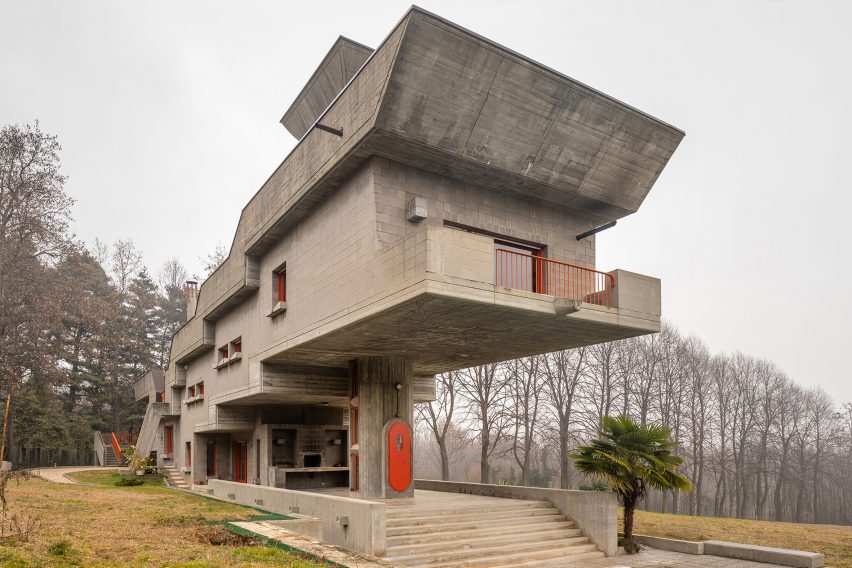
Villa Gontero, Cumiana. Carlo Graffi, Sergio Musmeci (1971)
Villa Gontero, one of the few residential buildings on this list, is defined by a massive concrete cantilever and bright-red details that stand out against the grey hue of the material.
“Hidden in hills on the outskirts of Turin there is this private villa designed by the architect and designer Carlo Graffi, in collaboration with Sergio Musmeci, who realised a daring and bold cantilever structure,” Conte said.
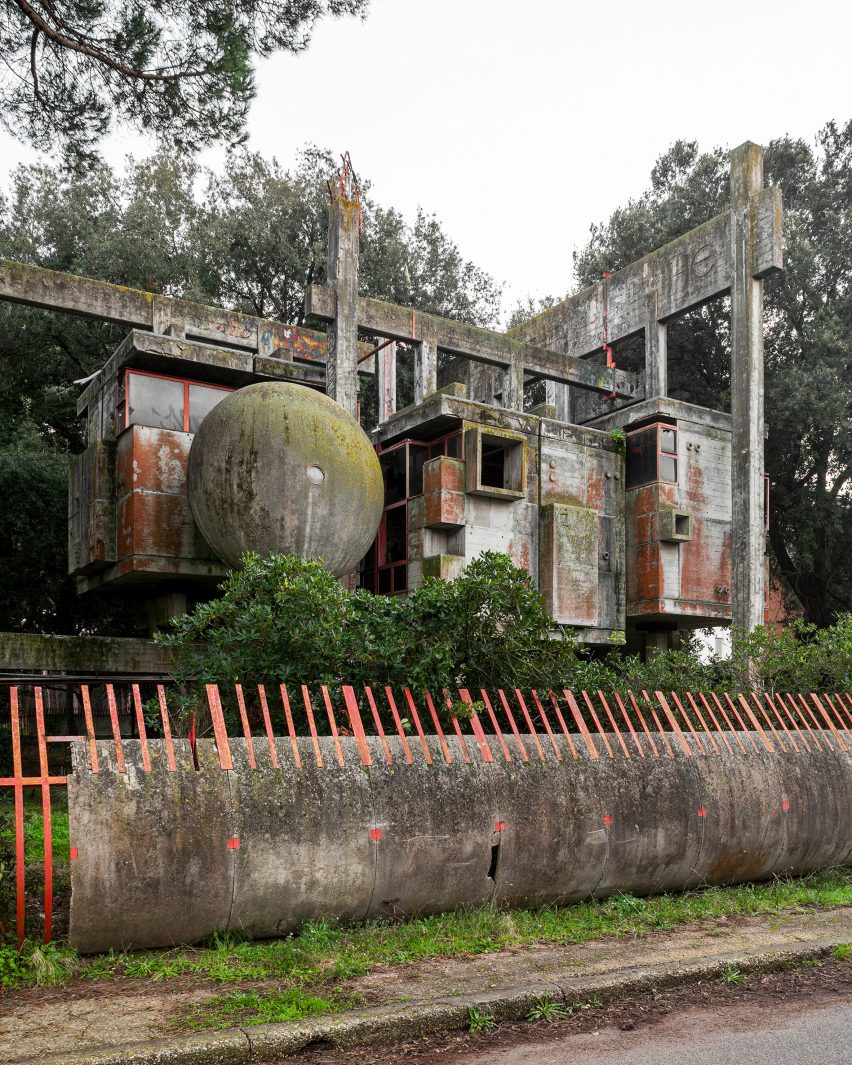
Tree House, Fregene, by Giuseppe Perugini, Raynaldo Perugini and Uga De Plaisant, (1971)
“This experimental house, which became quite famous all over the world in recent years – in particular among lovers of concrete – is absolutely unique,” Conte said.
“Built in a seaside town near Rome, it shows different levels supported by concrete beams and red-painted iron joints that clearly show, from the outside, the internal organisation of the space.”

Industry Viaduct-Musmeci Bridge, Potenza, by Sergio Musmeci (1976)
The twisting shapes and asymmetric openings of the Musmeci Bridge make the viaduct an eye-catching piece of infrastructure in Potenza, southern Italy.
“The most famous masterpiece by Sergio Musmeci, a bridge that plays with weight and gravity without using real pillars or columns but a single wave of concrete creating several arches that support the overhead road with elegance and efficiency,” Perego said.
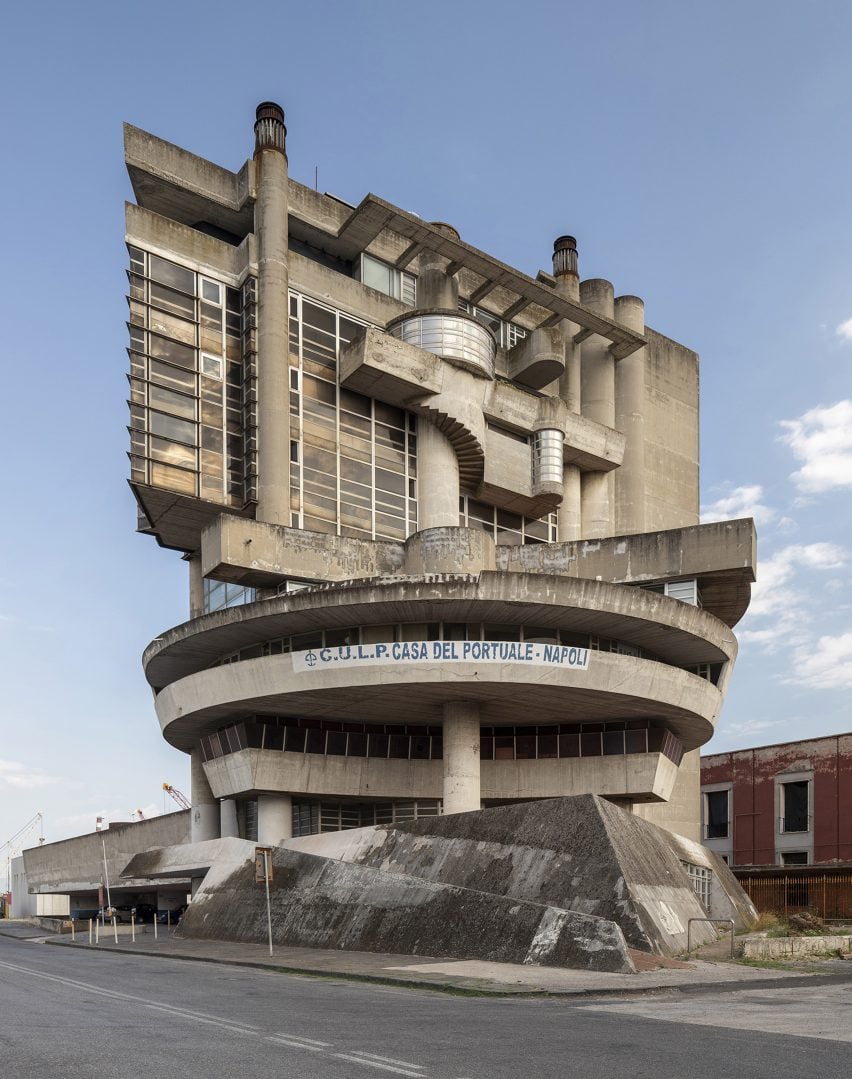
Casa del Portuale, Naples, by Aldo Loris Rossi (1981)
Iconic Italian architect and designer Aldo Rossi is the creative mind behind this highly unusual building, which features a stacked design with visible structural details atop a geometric base.
“A dynamic experiment of shapes crashing into each other with barely controlled energy,” said Perego.
“An architecture created from sketches influenced perhaps by Sant’Elia and certainly by Frank Lloyd Wright, which has now become very popular as a location for television series and musical artwork.”
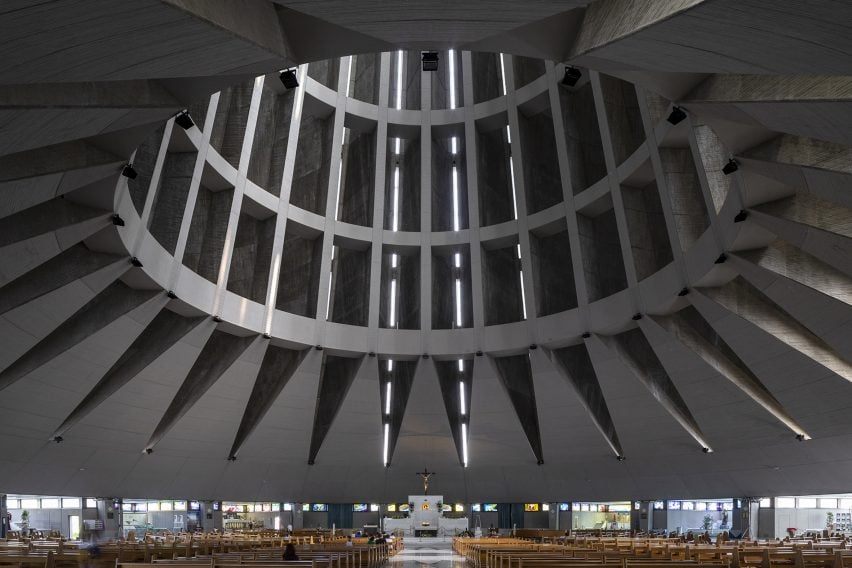
Our Lady of Tears Sanctuary, Syracuse, by Michel Andrault and Pierre Parat (1994)
One of a number of churches pictured in the book, the Our Lady of Tears Sanctuary has an interior that is as striking as its exterior, with a dark ceiling that rises into the roof.
“A huge and sci-fi church right in the ancient Greek Syracuse, with an impressive wide circular space topped by a cone that ascends for more than 100 metres,” Perego said.
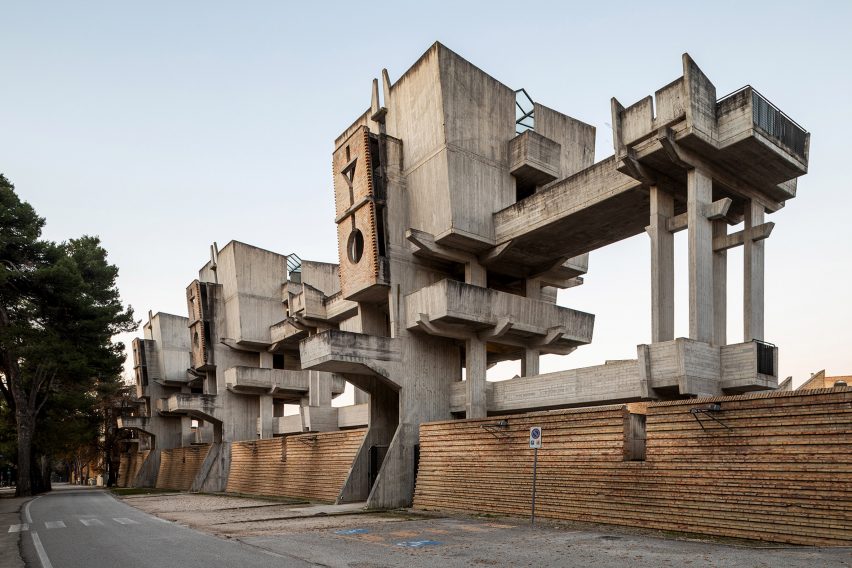
Cemetery Extension, Jesi, by Leonardo Ricci (1994)
Begun in 1984 and completed in 1994, this cemetery extension in central Italy was designed by architect Leonardo Ricci, who is known for rejecting the idea of traditional architecture.
“A structure that can easily trigger Star Wars imagery is just the entrance of an incredible – and quite brave – project that reshapes a portion of the landscape in a graveyard with grass, pathways and concrete,” Conte said.
